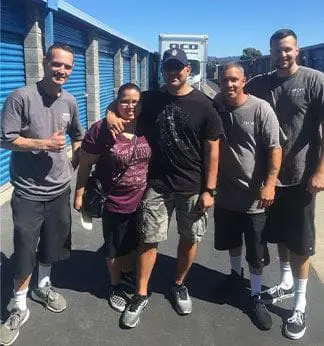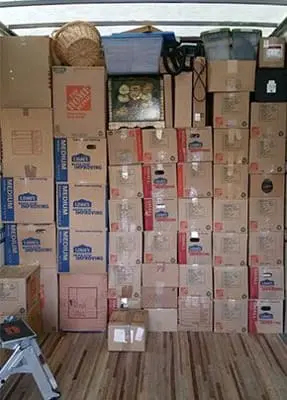How To Downsize Before Your Big Move
August 7, 2024 moving
When it comes to moving, one of the biggest challenges that many people face is downsizing. Whether you’re moving across town or across the country, it’s important to declutter and get rid of items you no longer need before the big day. Decluttering before a move can not only help reduce moving costs but also make the entire process more organized and less stressful. In this blog post, we’ll explore some of the most common ways to downsize before your big move, including selling items, donating items, and throwing away items that cannot be sold or donated.
Selling Items to Reduce Moving Costs and Clutter
Engaging in the sale of personal items as a preparatory step for moving is a strategy embraced by a significant portion of individuals aiming to downsize. This approach is not only beneficial in lightening the load for the move but also serves as an avenue to generate additional income. Between 40-50% of those on the move resort to selling their possessions, utilizing platforms such as Craigslist or Facebook Marketplace, or setting up traditional garage sales as their venues of choice.
When embarking on the sales process, it’s crucial to adopt a strategic mindset. Setting competitive prices is key to attracting potential buyers. Items that are priced too high may linger without interest, while those priced too low may sell quickly but not generate the desired revenue. An effective strategy to enhance sales appeal is the bundling of similar items. This not only makes the offer more attractive to buyers looking for a deal but also simplifies the selling process for you.
In preparing items for sale, thorough evaluation is essential. Assess each item’s condition and usability, ensuring that what you’re offering aligns with what buyers are seeking. High-quality photographs and detailed descriptions in your listings can significantly increase the likelihood of a sale. This visual and textual clarity helps potential buyers make informed decisions, thereby facilitating a smoother transaction.
It’s also beneficial to schedule your sales well ahead of your moving date. This gives you ample time to sell as many items as possible and avoids the rush of last-minute attempts to offload possessions. Additionally, engaging with potential buyers requires patience and flexibility. Being open to negotiation and accommodating with viewing times can make the difference between a sale and a missed opportunity.
By adopting these strategies, you can effectively reduce both clutter and moving costs, making your transition to a new home a more streamlined and financially beneficial experience.
Donating Items to Charities and Nonprofits
In the process of decluttering before a move, many individuals find themselves with possessions that, although not suitable for sale, are still in decent shape and can serve others well. This scenario has led approximately 60-70% of movers to opt for donating their gently used items. This act of giving not only contributes positively to the community by supporting those in need but also aids in the downsizing process by clearing out unnecessary belongings.
Selecting the right charity or nonprofit for donation requires a bit of research to ensure that your items go to those who can truly benefit from them. Local shelters, thrift stores that support charitable causes, and organizations dedicated to providing goods for low-income families are excellent places to start. Additionally, some charities offer pickup services, which can be particularly helpful for large items like furniture or appliances, simplifying the donation process further.
Before donating, it’s important to check the condition of your items. Charities often have guidelines on what they can accept, typically requiring donations to be clean and in good repair. Items that do not meet these standards may be better suited for recycling programs.
Engaging in the donation of items not only facilitates the decluttering effort but instills a sense of purpose in the moving process. It transforms the task of downsizing from a chore into an opportunity for generosity, providing both practical and emotional benefits. By carefully selecting organizations that align with your values, you ensure that your contributions make a meaningful impact, reinforcing the positive aspects of change that come with moving.
Throwing Away Items That Cannot Be Sold or Donated
In the journey of downsizing for a move, we often encounter possessions that are neither fit for sale nor suitable for donation. These items might be broken, outdated, or otherwise unusable. Dealing with such goods responsibly is crucial to ensure that we do not contribute unnecessarily to landfill waste. Approximately 80% of individuals decluttering for a move face the decision of discarding items that fall into this category.
When determining what to throw away, it’s essential to assess each item critically. Ask yourself if there’s any way to repurpose or recycle the item. Many communities offer recycling programs that accept a wide range of materials, from electronics to textiles. Taking advantage of these services can significantly reduce the environmental impact of your move.
For items that must be thrown away, proper disposal is key. Hazardous materials, such as paint, batteries, and certain electronics, require special handling to prevent harm to the environment. Local waste management services often provide guidelines and special drop-off locations for these types of items.
While the process of throwing away belongings can seem daunting, it is an integral step in achieving a successful decluttering effort. By disposing of items responsibly, you ensure a cleaner, more organized move, while also doing your part to minimize ecological footprint. It’s an opportunity to reflect on consumption habits and make more sustainable choices in the future.
Remember, decluttering is not just about getting rid of things but about making mindful decisions on what to keep, sell, donate, or responsibly dispose of. This careful consideration will lead to a more organized and efficient move, paving the way for a fresh start in your new home.
Creating a Decluttering Plan for an Organized Move
Embarking on a decluttering journey necessitates a thoughtful strategy to ensure that every step towards your move is both efficient and manageable. Initiating this process with a detailed plan can immensely facilitate a smoother transition to your new abode. The best approach is to compartmentalize the task by focusing on one room at a time, systematically working through your home to evaluate each item’s fate—be it kept, sold, donated, or discarded.
Allocating specific periods each day for decluttering activities can significantly alleviate the potential overwhelm associated with this endeavor. Such a structured timetable allows for a more focused and productive clearing out process, ensuring that no area is overlooked. It’s beneficial to prioritize rooms based on their complexity and the volume of items they contain, starting with the most cluttered spaces to generate early momentum and visible progress.
Incorporating family members or friends into your decluttering plan not only fosters a communal spirit but also expedites the process. Their participation can offer fresh perspectives on what items hold value and should be retained versus those that no longer serve a purpose in your life. Moreover, their assistance can transform what might otherwise be a solitary task into an engaging and sociable project.
By diligently following a decluttering plan, you pave the way for an orderly packing phase, where only essential and cherished belongings make the journey to your new home. This methodical approach not only streamlines the moving process but also sets the stage for a more organized and clutter-free living environment in your future residence.
Utilizing Professional Moving Services for an Optimized Move
For those overwhelmed by the prospect of managing a move single-handedly, professional moving services offer a valuable solution. These experts provide comprehensive support, from the meticulous packing of your possessions to their strategic loading and unloading, ensuring every aspect of your move is handled with precision. The benefits of engaging professional movers extend beyond mere transportation; they encompass the careful packing of delicate items, furniture disassembly and reassembly, and the efficient organization of your belongings to facilitate a smoother transition into your new space.
Professional movers are equipped with the tools and expertise to tackle logistical challenges, whether it involves navigating narrow staircases or transporting heavy and bulky items safely. This expertise not only spares you from potential injury but also protects your possessions from damage during transit. Additionally, many moving companies offer customizable services, allowing you to select options that best fit your specific needs, whether you require full-service assistance or just help with the heavy lifting.
Opting for professional moving services can also be a strategic financial decision. By consolidating moving tasks into one comprehensive service, you might find the overall cost compares favorably to the cumulative expense of DIY moving efforts, such as truck rental, packing supplies, and potential damage repairs. Furthermore, the time and energy saved can be invaluable, allowing you to concentrate on adapting to your new environment and tackling other priorities related to your move.
In summary, while the idea of decluttering and organizing for a move may seem daunting, incorporating professional movers into your moving plan can significantly ease the process. Their expertise not only ensures the safe and efficient handling of your belongings but also allows for a more relaxed and positive moving experience, paving the way for a smooth start in your new home.






